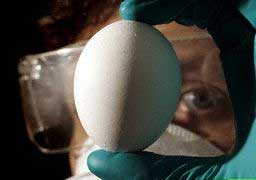A type of H5N1 vaccine developed by CSL Ltd. in Australia has shown promising results when tested in small doses on adults. The announcement was made on February 17.
 |
| Chicken eggs are used to produce the vaccine (Photo: VNN) |
Results from trials involving 400 healthy adults aged 18 to 45 showed that the vaccine generated a strong enough immune response to protect about 200 individuals. Side effects such as arm pain and mild fever were reported to be minimal.
The tested dosage was 15 micrograms of H5N1 antigen combined with aluminum phosphate as an adjuvant to enhance the immune response. It is known that other companies have observed better immune responses using different adjuvants. However, aluminum-based adjuvants are the only additives registered for use worldwide.
CSL hopes that their vaccine sample will receive approval by the end of 2006, following trials with dosages of 30 and 45 micrograms on 800 participants ranging from 6 months to elderly individuals.
According to CSL, it is still unclear how effective their vaccine will be against the H5N1 strain that has mutated to spread easily between humans.
Experts recommend that vaccinating humans or poultry against one strain of H5N1 does not provide protection against other H5N1 strains. It is advised to use multiple H5N1 strains to formulate vaccines and to continually update these vaccines.
The H5N1 strain used by CSL was obtained from a patient in Vietnam. This strain was developed and distributed by the World Health Organization. Subsequently, CSL cultured the virus in chicken eggs, and the vaccine production process is similar to that of conventional flu vaccines.
The company has stated that it currently has no plans to produce vaccines using alternative methods. Meanwhile, other companies are experimenting with techniques such as cell culture. So far, cell culture methods have proven to produce vaccines faster than the traditional egg-based method.
Minh Sơn (According to Reuters)


















































